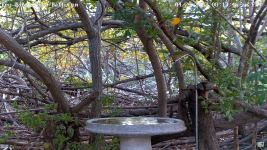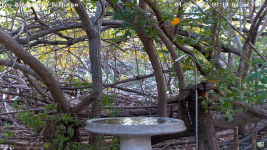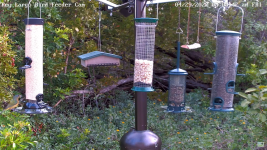i.like.birds
Member

Hello! I am curious about this bird I saw on my feeders this morning. It looks to be a Painted Bunting, which we do get them in the fall & winter, but it has very dilute plumage and slight color variation. I've searched for examples online but have not found any to come close to the bird I saw this morning. This is around the last couple weeks we should be seeing them this far south. I am basically looking for a confirmation, or if anyone knows any variation, morph, hybrid info, I'd love to learn!
I've attached some photos, and also have links to video clips to share for ID purposes.
Feeder View Video
Bath View Video
I've attached some photos, and also have links to video clips to share for ID purposes.
Feeder View Video
Bath View Video









